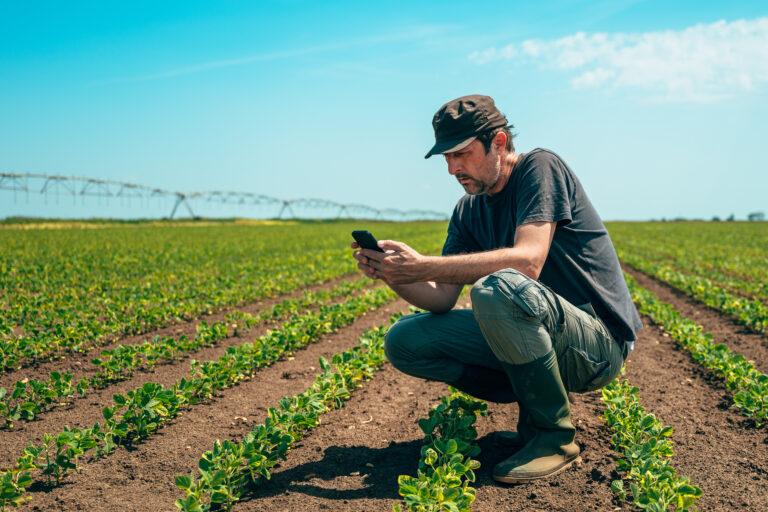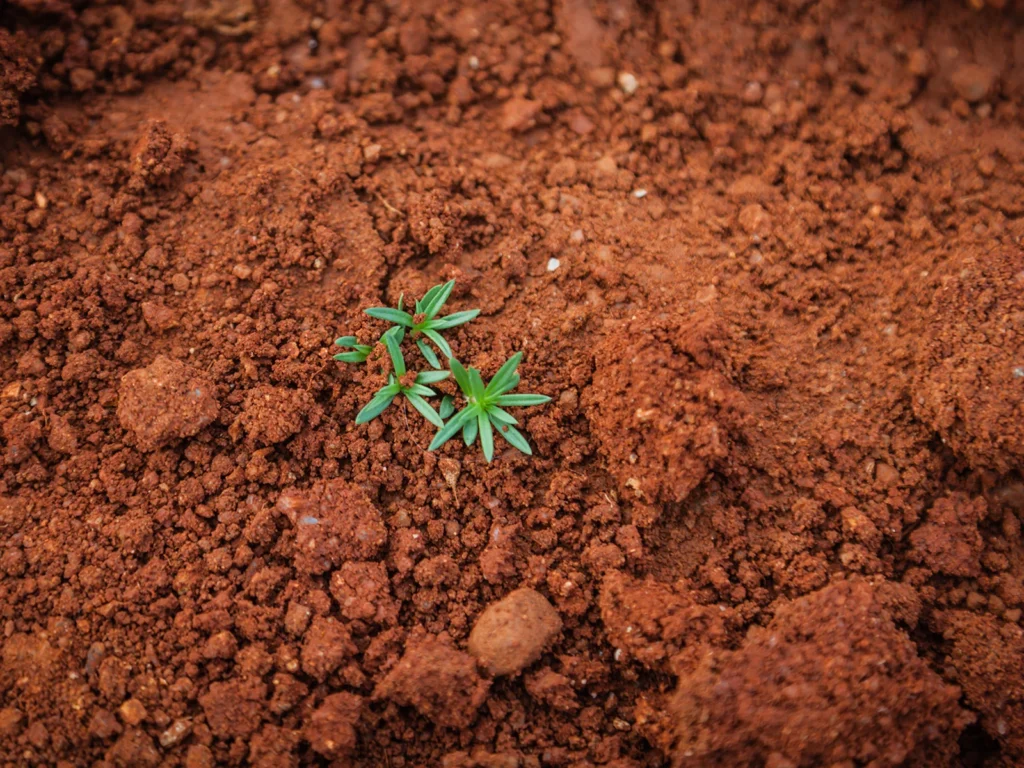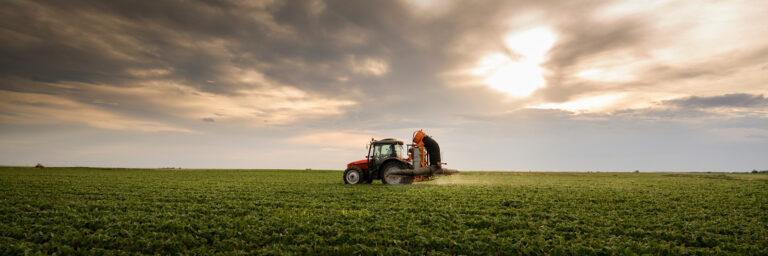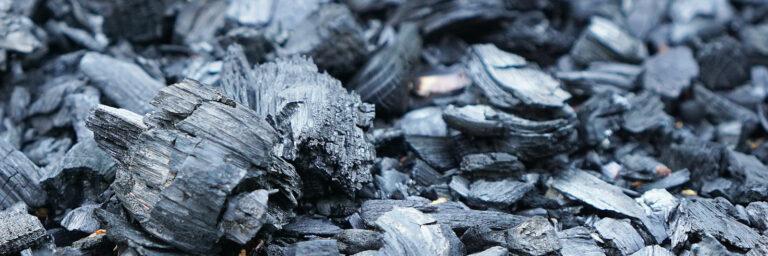
Accelerating Ruminant Carbon Zero (ARCZero) is a pioneering project in Northern Ireland that has demonstrated how farms can make structured progress towards reaching national net carbon targets. It has combined measuring and benchmarking from Agrecalc with forensic evidence obtained through various scientific methods to demonstrate not only that agriculture has the capacity to capture, manage and store carbon, but that there are some farms that are already making headway beyond net zero.
ARCZero is a farmer-led European Innovation Partnership (EIP) Operational Group project, co-funded by the European Agricultural Fund for Rural Development and the Northern Ireland Department of Agriculture, Environment and Rural Affairs (DAERA).
The project set out to show that, by empowering practicing farmers to lead innovation on farm, establishing their carbon numbers, and having access to robust procedures for forensic checks, they can make better quality decisions on farm and deliver positive change.
The ARCZero project, based on the premise that, to manage a situation, it is necessary to measure its parameters and establish a baseline, aimed to address these issues by:
The Operational Group, set up by John Gilliland, one of the farmers and a Professor of Practice at Queen’s University Belfast, consisted of seven farm business owners and representatives of four organisations (Birnie Consultancy, AgriSearch, Devenish Nutrition and Queen’s University Belfast).
Additional support has been provided by: Agricarbon, Agri-food and Biosciences Institute (AFBI), College of Agriculture, Food and Rural Enterprise (CAFRE), NRM (independent agronomic and environmental laboratory), RPS Group (for quality control on the site selection and soil sampling), and Scotland’s Rural College (SRUC).

The definition of a net-zero farm business was established as: A net-zero farm is one that can deduct gross annual carbon sequestration (adjusted for renewables and waste management) from their gross annual GHG emissions and have these results at zero or beyond. Reduction in greenhouse gases is also demonstrated in percentages, comparing between years 2021 and 2023.
Establishing this would involve using an LCA calculator to work out farm emissions, as well as measuring carbon stocks in soils and above ground vegetation, and gaining some understanding of rates of sequestration.
When selecting an LCA calculator, the group decided that it needed to satisfy the following criteria:
Only one calculator – Agrecalc – out of many available in the UK, met all the set criteria.
“In our conversations with the [Northern Ireland] government, there was a question of which calculator we were going to use. There are six questions that any calculator on the market should be able to answer when you talk to them, and when you answer those six question properly, you see that some of Agrecalc's competitors fall by the wayside really quite quickly. So, I feel that it's a fair statement that there was a consensus from multiple stakeholders based on Agrecalc's scientific and academic credibility."
John Gilliland, OBE, Professor of Practice at Queen's University Belfast, and Operational Group Lead
Running Agrecalc as chosen carbon calculator did involve collecting very detailed information twice: at the start of the project, and then at conclusion.
Prof John Gilliland says: “The challenge is that it’s quite onerous, but then, any life cycle calculator is. For farmers, it’s an alien process to go through. That was why we enlisted the help of SAC Consulting; the whole drive in ARCZero was to go on a journey of integrity. Any web-based calculator is only as good as the information you put into it. That is why I wanted a constant, and that constant was a professional to hold our hands, and make sure that everyone’s happy that we have the right data in the right place within the calculator, so that the end result would be as good as it could be”.
The data required were: stock numbers, including ages, purchases and disposals; animal performance, feed inputs; fuel usage, fertiliser applications, utilisation of animal manures; electricity consumption and fodder conservation.
Although a challenging process, invaluable advice and mentoring service were provided. “We used SAC Consulting to do the quality control of data and the mentoring, because we knew we were going to come back two years later and do it again. Part of the agreement with Agrecalc was that there would be a report at the end doing the ‘compare and contrast’ between year one and year three, which was done”, Prof John Gilliland says.
The results from the initial Agrecalc LCA calculations were as follows:
2021 Agrecalc Analysis | Enterprises | Gross emissions |
Ian McClelland | Dairy | 1,101 t / yr |
Hugh Harbison | Dairy | 2,009 t / yr |
John Egerton | Beef | 1,475 t / yr |
Roger & Hilary Bell | Sheep with Beef | 754 t / yr |
Simon Best | Arable with beef | 1,799 t / yr |
Patrick Casement & Trevor Butler | Beef and Sheep | 492 t / yr |
John Gilliland | Willows with dry cows | 156 t / yr |
*Recalculated to include AR5 update.
(*Agrecalc has since moved to reporting the outputs of our Soil Carbon Module as a traffic light system. The numerical values are kept here for comparison purposes needed for the project.
We are working on refining the methodology behind the calculations and will update our users on the progress. That said, forensic evidence from soil sampling provides reason for optimism that proper soil management can lead to increased soil carbon sequestration.)
2021 Agrecalc Analysis | Enterprises | Gross sequestration |
Ian McClelland | Dairy | 309 t / yr |
Hugh Harbison | Dairy | 549 t / yr |
John Egerton | Beef | 444 t / yr |
Roger & Hilary Bell | Sheep with Beef | 456 t / yr |
Simon Best | Arable with beef | 738 t / yr |
Patrick Casement & Trevor Butler | Beef and Sheep | 548 t / yr |
John Gilliland | Willows with dry cows | 156 t / yr |
“Both soil organic carbon stocks and above ground carbon stocks are the areas where we have least knowledge”, Prof John Gilliland says. “All the calculations in Agrecalc are to Tier 2, but the soil carbon module is Tier 1. Core to our journey in ARCZero is wanting to get to a net carbon position, not a gross one. So we agreed that we would use the carbon sequestration model, understanding its limitations – that it’s only to Tier 1. But backing that up, we would do a parallel comprehensive baseline of our stock, both in soil and in our trees and hedges. And we would do that digitally and forensically with the intention that we would repeat the process again in five years’ time”, Prof John Gilliland says.
|
2021 Agrecalc Analysis |
Enterprises |
Gross emissions |
Gross sequestration |
Net emissions |
% Reduction |
|
Ian McClelland |
Dairy |
1,1015 t / yr |
309 t / yr |
792 t / yr |
28% |
|
Hugh Harbison |
Dairy |
2,009 t / yr |
549 t / yr |
1,459 t / yr |
27% |
|
John Egerton |
Beef |
1,475 t / yr |
444 t / yr |
1,031 t / yr |
30% |
|
Roger & Hilary Bell |
Sheep with Beef |
754 t / yr |
456 t / yr |
298 t / yr |
60% |
|
Simon Best |
Arable with beef |
1,799 t / yr |
738 t / yr |
1,061 t / yr |
41% |
|
Patrick Casement & Trevor Butler |
Beef and Sheep |
492 t / yr |
548 t / yr |
-56 t / yr |
111% |
|
John Gilliland |
Willows with dry cows |
151 t / yr |
156 t / yr |
-4 t / yr |
103% |
*Recalculated to include AR5 update.
“When it comes to soil organic carbon stocks, we ourselves were on a journey”, Prof John Gilliland says. “In 2020, when I was laying this out, there was nothing to inform us. So, we did everything manually. We paid RPS Group to come out and stratify the landscape – which is one of the key things we did: we stratified our land into different land use categories, and land management categories. Because the question isn’t just about how much soil organic carbon you have, but is it under different land uses and different management categories.
“You want to get some feedback loop to the farmer – you want to give them some knowledge what it is that they have to do to build more carbon.”
The full interview with Prof John Gilliland on the processes taken and the lessons from the journey can be found in our blog.
2021 Agrecalc Analysis | Enterprises | Actual emissions | Benchmark average |
Ian McClelland | Dairy | 1.3 kg CO2e / kg FPC milk | 1.3 kg CO2e / kg FPC milk |
Hugh Harbison | Dairy | 1.25 kg CO2e / kg FPC milk | 1.3 kg CO2e / kg FPC milk |
John Egerton | Beef | 32.8 kg CO2e / kg dwt | 37.6 kg CO2e / kg dwt |
Roger & Hilary Bell | Sheep with Beef | 21.9 kg CO2e / kg dwt | 28. 4 kg CO2e / kg dwt |
Patrick Casement & Trevor Butler | Beef and Sheep | 24.6 kg CO2e / kg dwt | 41.9 kg CO2e / kg dwt |
"If you empower farmers with really good data about their own farm, they will change their behaviour positively, to deliver the journey to net-zero carbon, while also delivering other public goods, such as improvements in water quality and biodiversity."
John Gilliland, OBE, Professor of Practice at Queen's University Belfast, and Operational Group Lead

Further assessments were carried out in the following areas:
The detailed process can be found in the ARCZero Final Report.
Farm | Total Soil Carbon Stocks (tonnes CO2 equivalent) |
Ian McClelland | 31,813 |
Hugh Harbison | 68,054 |
John Egerton | 31,813 |
Roger & Hilary Bell | 50,819 |
Simon Best | 237,915 |
Patrick Casement | 54,556 |
John Gilliland | 19,468 |
Prof John Gilliland says: “From this we could only conclude that farmers are custodians of much of the nation’s carbon, and that we need to help them build additional carbon stocks.”
Read the full interview with Prof John Gilliland in our blog, where he talks about scientific experiments on his own farm, various multiple and multi-year trials on soil in Northern Ireland, and the soil management needed to shift carbon stocks.
This has enabled a number of mitigation actions, including grazing of coppice willow. In vitro experiments with coppice willow as grazing fodder have shown promise in reducing methane production by up to 40% from ruminants, and this was an excellent opportunity to test the theory in a field trial (separate blog to follow).
"The seven ARCZero farms hold 515,166 tonnes of CO2 equivalent within their total area of 930 ha. This figure gives an idea of the vast amount of carbon stored in Northern Ireland’s farmland. Our farmers are unquestionably the guardians of the nation’s carbon."
John Gilliland, OBE, Professor of Practice at Queen's University Belfast, and Operational Group Lead
At the end of the project, the calculations were run through Agrecalc again, to measure progress. Five of these farms achieved a reduction in their emissions within a two-year time frame. The other two farms were not run through Agrecalc for a second time as they had already achieved net zero and in the absence of any incentive for them to go further in their carbon journey. Also, due to circumstances beyond farmers’ control, baselining in 2021 was not possible.
These actions have led the project to ascertain the following:

Farm | Above ground carbon | % of total |
Ian McClelland | 1,310 tonnes | 4% |
Hugh Harbison | 1,969 tonnes | 3% |
John Egerton | 1,310 tonnes | 2% |
Roger &Hilary Bell | 688 tonnes | 4% |
Simon Best | 6,493 tonnes | 3% |
Patrick Casement | 4,022 tonnes | 7% |
John Gilliland | 4,937 tonnes | 20% |
TOTAL | 20,729 tonnes |
|
Total ARCZero CO2e stocks | Soil Carbon | Tree Carbon | Total Carbon | % C in Soil |
Ian McClelland | 31,813 | 1,310 tonnes | 33,123 t | 96 % |
Hugh Harbison | 68,054 | 1,969 tonnes | 70,023 t | 97 % |
John Egerton | 31,813 | 1,310 tonnes | 33,123 t | 96 % |
Roger &Hilary Bell | 50,819 | 688 tonnes | 51,507 t | 98 % |
Simon Best | 237,915 | 6,493 tonnes | 244,407 t | 97 % |
Patrick Casement | 54,556 | 4,022 tonnes | 58,578 t | 93 % |
John Gilliland | 19,468 | 4,937 tonnes | 24.405 t | 80 % |
|
| Total | 515,166 t |
|
Farm | Enterprises | 2021 Emissions (CO2e per kg product) | 2023 Emissions (CO2e per kg product) | % Reduction |
Ian McClelland | Dairy | 1.3kg | 1.1kg | 13% |
Hugh Harbison | Dairy | 1.25kg | 1.2kg | 4% |
John Egerton | Beef | 32.8kg | 25.6kg | 22% |
Bells | Lamb | 22kg | 15.7kg | 28% |
Simon Best | Cereals | 0.99kg | 0.47 | 53% |
The five farms reassessed by Agrecalc in 2023 have all made significant reductions in their carbon emissions. On that basis, most would be on track to meet Northern Ireland’s zero timescales of cutting emissions by 48% before 2030, and make a 100% reduction (net zero) by 2050.
“The project can now precisely and robustly measure what the management actions are achieving,” Prof John Gilliland says. “With the new carbon sequestration measuring technologies like LiDAR and Agricarbon, which will be repeated in five years’ time, we can record actual change, which is vital for Tier 3 net carbon calculations. In five years, maybe we’ll sequester 540,000 tonnes of carbon?
“We will repeat Agrecalc calculations in 2025. We will continue to build on our ‘win-wins’, the feasible and less costly options, and secure the funding for our ‘win-lose’, more expensive options. We aim to continue to prove that farmers can deliver on their responsibilities if given a chance,” Prof John Gilliland concludes.


After two years of operation as a Limited Company, Agrecalc became part of Scotland’s Rural College (SRUC) as of 1 April 2025.

Biochar is a carbon-rich material produced by pyrolysing biomass, which offers a variety of potential agronomic benefits. In this guest article, Black Bull Biochar discusses how these effects work together to bolster productivity, sustainability, and resilience in farming.